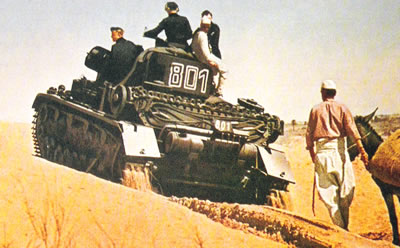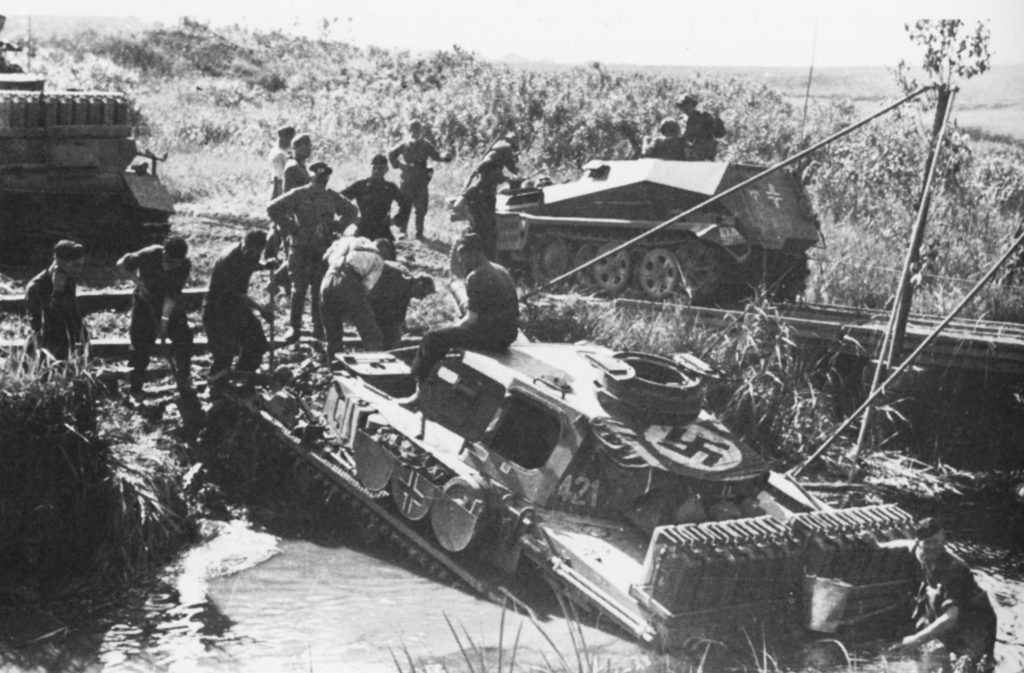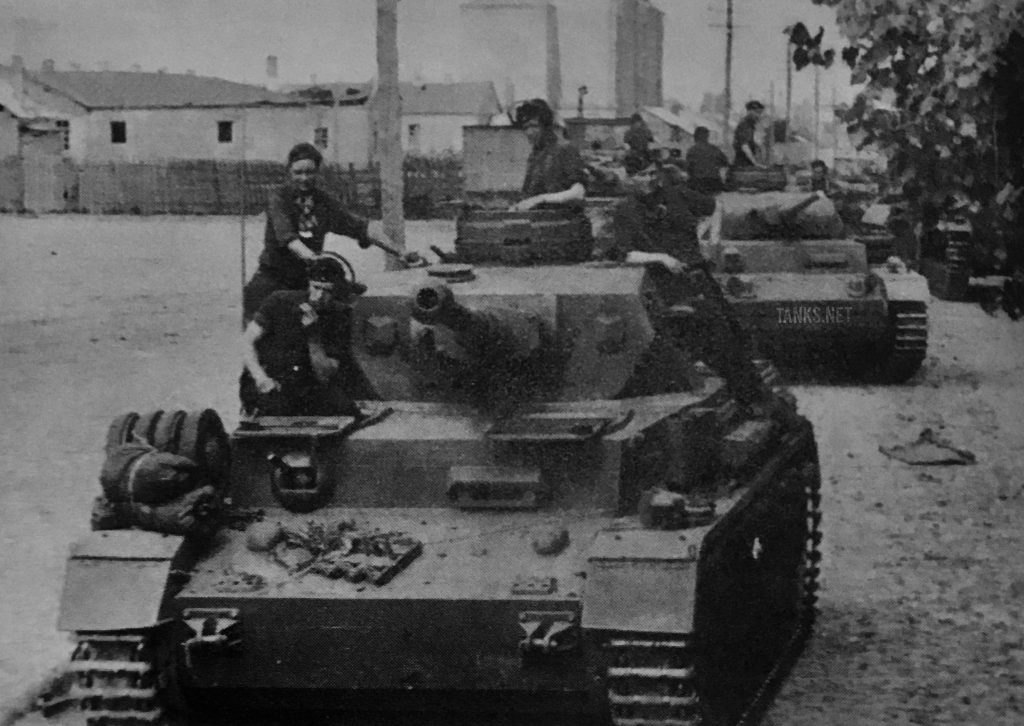The PzKpfw or Panzer IV was the only German World War II battle tank that was produced until the end of the war.
Together, the PzKpfw III and the PzKpfw IV provided most of the military might of Germany’s Panzerwaffe (armored force).
A larger turret ring on the PzKpfw IV allowed it to carry bigger guns than the PzKpfw III could carry.
There were nine standard models of the PzKpfw IV: Ausfs A through J. (There was no Ausf I).
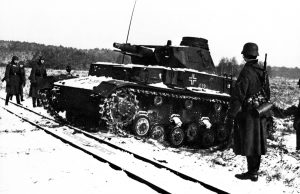
The earliest models of the PzKpfw IV functioned as infantry support tanks. Each carried a 2.95 inch (7.5cm) L/24 low-velocity short-barreled gun.
The armor thickness in versions Ausf A through Ausf E was continually increased; therefore, the overall weight of the tank increased as well.
The hull machine gun was removed from Ausfs B and C, but refitted for Ausf D and subsequent versions.
Ausf F entered production in 1941 and first appeared in the middle of 1942. By that time, the Germans had realized that the PzKpfw IV needed more firepower, so they fitted Ausf F with a long-barreled 2.95 inch (7.5 cm) gun. The stowage area of Aus F was altered so that larger rounds could be stored.
Ausf G was very similar to Aus F, but it had even thicker armor.
Ausf H had armor that was thicker still. It also had a new idler and a better transmission. More Ausf H tanks were produced than any other version of the PzKpfw IV.
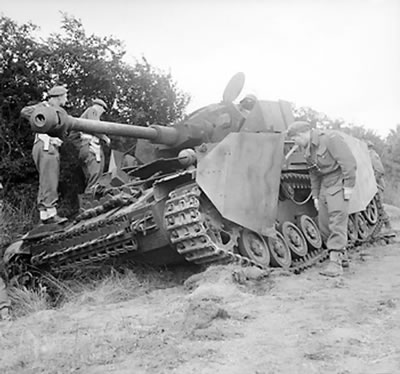
The final version of the PzKpfw IV was Ausf J. It weighed 25 tons (25,401 kg), had a top speed of 23.6 miles per hour (38 kph) and a range of more than 186 miles (300 km.) Ausf J had Schürzen (skirts) to protect it from high-explosive anti-tank (HEAT) weapons, such as bazookas and PIATS (projector infantry anti-tanks).
Many variants of the PzKpfw IV were produced. These included a command tank, an artillery observation vehicle, various bridges and an ammunition carrier for the Karlgerät self-propelled heavy siege mortar. This ammunition carrier had racks above the engine compartment for carrying four 23.61 inch (60 cm) rounds.
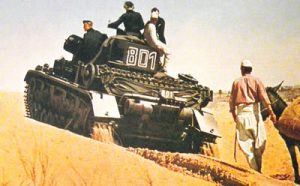
Variants also included a number of tank destroyers, anti-aircraft guns (Flakpanzer), assault guns and self-propelled guns such as:
- Jagdpanzer IV tank destroyer
- Hornisse (Hornet), tank destroyer – later renamed Nashorn (Rhinoceros)
- Panzer IV 70(A) and Panzer IV 70(V) tank destroyers
- Flakpanzer IV Möbelwagen anti-aircraft gun
- Sturmgeschütz IV (StuG IV) assault gun
- Brummbär Sturmpanzer IV self-propelled gun.
PzKpfw Panzer IV Ausf F2 Medium |
|
|---|---|
| Active: | 1937 (Ausf A), 1942 (Ausf F) |
| Crew: | 5 |
| Weight: | 22 tons (22,350kg) |
| Length: | 21ft 9in (6.63m) |
| Height: | 8ft 9.5in (2.68m) |
| Width: | 9ft 5.5in (2.88m) |
| Weapons: | Main – 2.95in (7.5cm) KwK40 L/43 gun, Secondary – 2 x 0.312 inch (7.92mm) machineguns |
| Armor | Maximum – 1.97in (50mm) |
| Engine: | Maybach HL 120 TRIM V12 gasoline, 300hp |
| Speed: | 24.9mph (40kph) |
| Range: | 129.9 miles (209 km) |
